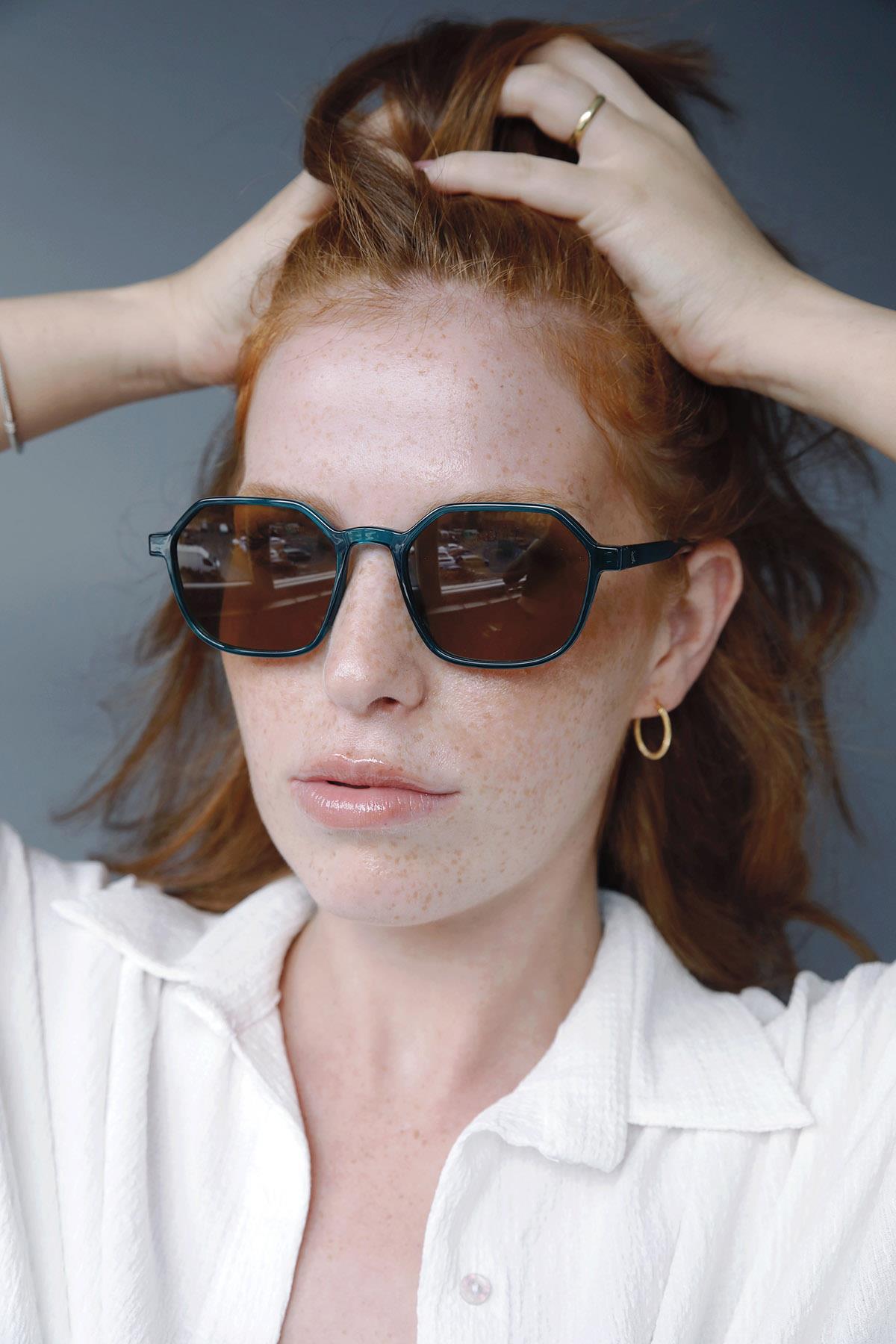Have you ever looked closely at a piece of turquoise jewelry and wondered about its colors, perhaps even noticing hints of brown? It's a really interesting question, and one that often pops up for people curious about these beautiful stones. Many folks, too, are a bit surprised when they see turquoise that isn't just pure blue or green, so it's almost natural to ask if brown is somehow "married" to turquoise. We're going to explore just what makes turquoise look the way it does, especially when it includes those earthy tones.
The idea of "is turquoise brown married" really gets at the heart of how turquoise forms and how it's used in amazing pieces, you know, like those cherished Native American jewelry items. It’s not about a person, but rather about the stone itself and its fascinating characteristics. You might see a stunning squash blossom necklace, for instance, and notice the stone has these dark lines or patches, which can certainly look brown, and it makes you think about why that is.
So, we'll talk about the natural world of turquoise, where it comes from, and what gives it all its different looks, including those brown parts. It’s quite a story, actually, about geology and artistry, and how these elements seem to be very much "married" within the stone's very being. This discussion will, in a way, help clear up some common questions about this precious gem.
Table of Contents
- Understanding Turquoise Color: More Than Just Blue
- The Natural "Marriage" of Turquoise and Brown Matrix
- Where Does This Turquoise Come From? Global Connections
- Caring for Your Turquoise and Color Changes
- Turquoise in Native American Jewelry: A Rich History
- Frequently Asked Questions About Turquoise and Brown
Understanding Turquoise Color: More Than Just Blue
When most people think of turquoise, they often picture a bright, sky-blue shade. However, this gem comes in a really wide range of colors, from deep blues to vibrant greens, and yes, even shades that appear to have brown or black elements. The color of turquoise is actually determined by the presence of other minerals during its formation. For example, more copper typically leads to bluer hues, while more iron might lean it towards the green side. It's quite a spectrum, you see, and each piece is uniquely formed.
The "brown" you might observe in turquoise is usually not the turquoise mineral itself, but rather what jewelers and geologists call "matrix." This matrix is the host rock that the turquoise formed within, and it can be made of various materials like limonite, sandstone, or chert. These materials often appear as veins, webs, or splotches running through the stone, and they are, in some respects, a very natural part of the stone's identity.
So, when you ask "is turquoise brown married," you're really asking if brown is a natural partner to the turquoise stone. And the answer is, for sure, yes! This matrix is, in a way, permanently "married" to the turquoise, giving each stone its own special fingerprint. It’s what makes each piece truly one-of-a-kind, and something that collectors often value quite a bit.
The Natural "Marriage" of Turquoise and Brown Matrix
The presence of brown matrix in turquoise is a sign of its natural origin. It shows you that the stone was formed within the earth, intertwined with other minerals. This isn't a flaw; rather, it's a characteristic that can add significant beauty and character to a piece of jewelry. Some of the most sought-after turquoise varieties, like certain types from the Kingman mine, are known for their striking black or brown spiderweb matrix, so it's a desirable trait for many.
Think of it this way: the turquoise mineral grew within cracks and fissures in the host rock. As it solidified, bits of that surrounding rock became enclosed within the turquoise itself. This creates those distinctive patterns that can look like brown lines or webs. This natural integration is, you know, what we mean by the "marriage" of turquoise and brown. It's a permanent bond formed deep within the earth.
This "marriage" is also a key indicator of authenticity. While some lower-quality turquoise might be treated or dyed to enhance color, natural matrix is a clear sign that you're looking at a genuine stone. It’s a bit like a birthmark, really, showing its true origins. This natural appearance is often highly prized by collectors and artists alike, as it tells a story of the stone's journey.
Where Does This Turquoise Come From? Global Connections
Turquoise is found in various parts of the world, and the origin can influence its color and the type of matrix it carries. For a long time, American mines in states like Arizona and Nevada were major sources of beautiful turquoise. However, according to Durango Silver Company, Chinese turquoise now accounts for over 60% of the stones sold in the United States. This shift is due to the scarcity of American turquoise, which has become quite rare, you know, over the years.
The characteristics of turquoise, including its hardness and porosity, can vary depending on its mine origin and just the overall quality of the stone. Some turquoise is naturally harder, making it less prone to changes, while others are more porous. This porosity means they can take on oils from your skin, lotions, soaps, or dirt, which might, in a way, affect their appearance over time.
Because of these natural variations and the inherent porosity of some stones, it is very common for a turquoise dealer to stabilize the turquoise. Stabilization is a process where a clear epoxy resin is used to fill the tiny pores in the stone, making it harder, less likely to change color, and more durable for jewelry. This process, too, helps preserve the stone's beauty, including any natural brown matrix that's part of its charm.
Caring for Your Turquoise and Color Changes
Given that some turquoise is more porous, it can actually absorb things from its environment. This means that over time, a turquoise stone might slightly change its color, sometimes becoming a bit greener or darker. This isn't necessarily a bad thing; it’s just the stone reacting to your skin's oils or the air around it. It’s a living stone in a way, and it changes with you.
If you inherited a piece, like a squash blossom necklace from your grandparents, as one person mentioned purchasing in New Mexico in the late ‘70s or early ‘80s, it might have already developed a unique patina. This patina is part of its history and character. Grandpa bought it from the artist, I believe, and that direct connection adds to its story, you know.
To keep your turquoise looking its best, it's generally a good idea to avoid exposing it to harsh chemicals, perfumes, or lotions. A gentle wipe with a soft cloth is usually all it needs. This simple care helps preserve its natural beauty, including those distinctive brown patterns that are so wonderfully integrated into the stone. So, you know, treat it gently.
Turquoise in Native American Jewelry: A Rich History
Turquoise holds deep cultural significance for many Native American tribes, especially the Navajo and Zuni artists. The free-form shaped stone on the left, for instance, is usually a Navajo-made giveaway piece, which is quite special. Plus, coral and turquoise are found made by both Navajo and Zuni artists, but it's definitely favored by the Zuni, in some respects.
When you have questions about the origins or meanings of your jewelry, it’s really helpful to connect with experts. Hi, my name is Richard, and I resided in Globe, AZ, from 1973 through 1979. During that time, I had the privilege of working at LW Hardy Turquoise Co. That experience gave me a lot of insight into these beautiful pieces, and it was a very enriching time.
Do you have a question about Native American jewelry, art, crafts, authenticity, or artists? You can ask here, or read our discussions to educate yourself. It’s a great way to learn more about the craftsmanship and history behind these items. For instance, there was recently some discussion about yellow turquoise. I finally came across my yellow turquoise beads purchased from Thunderbird Supply in the 1980s, which was a nice find, actually.
The "marriage" of turquoise with other elements, whether it's the natural brown matrix or other stones like coral, is a testament to the artistry and connection to the earth that defines much of Native American jewelry. Each piece tells a story, and the unique characteristics of the stone, including any brown veins, are part of that narrative. It's truly something to appreciate.
Frequently Asked Questions About Turquoise and Brown
Does turquoise naturally have brown in it?
Yes, absolutely! Many natural turquoise stones contain brown, black, or even reddish-brown inclusions. This is called "matrix," and it's the remnant of the host rock where the turquoise formed. It’s a very common and often highly prized feature, giving each stone a distinct look. So, it's not unusual at all to see these earthy tones.
What causes brown veins in turquoise stones?
The brown veins are caused by the presence of other minerals, like limonite or iron oxide, from the surrounding rock that the turquoise grew within. These minerals create intricate patterns, often described as spiderweb matrix, which are, you know, truly unique to each stone. It's a natural part of its geological formation.
Can turquoise change color over time?
Some turquoise can indeed change color over time, often becoming a bit greener or darker. This happens especially with more porous turquoise, as it can absorb oils from your skin, lotions, or even dirt. This change is sometimes called "patina" and is considered a natural aging process for the stone. It’s a bit like how certain metals also develop a patina.
Understanding these aspects of turquoise, including its natural "marriage" with brown elements, helps us appreciate its true beauty and history. It's not just a stone; it's a piece of the earth's story, shaped by time and geology. To learn more about the fascinating world of turquoise and its origins, you might want to visit a reputable source like the Durango Silver Company, which has a lot of good information.
If you're curious about different types of turquoise or specific pieces, you can learn more about turquoise varieties on our site, and link to this page about Native American jewelry care. We really hope this helps clarify why you might see brown in your beautiful turquoise pieces, and how it’s actually a very welcome part of the stone's character. It's quite a unique thing, actually, to see these colors come together so perfectly.



